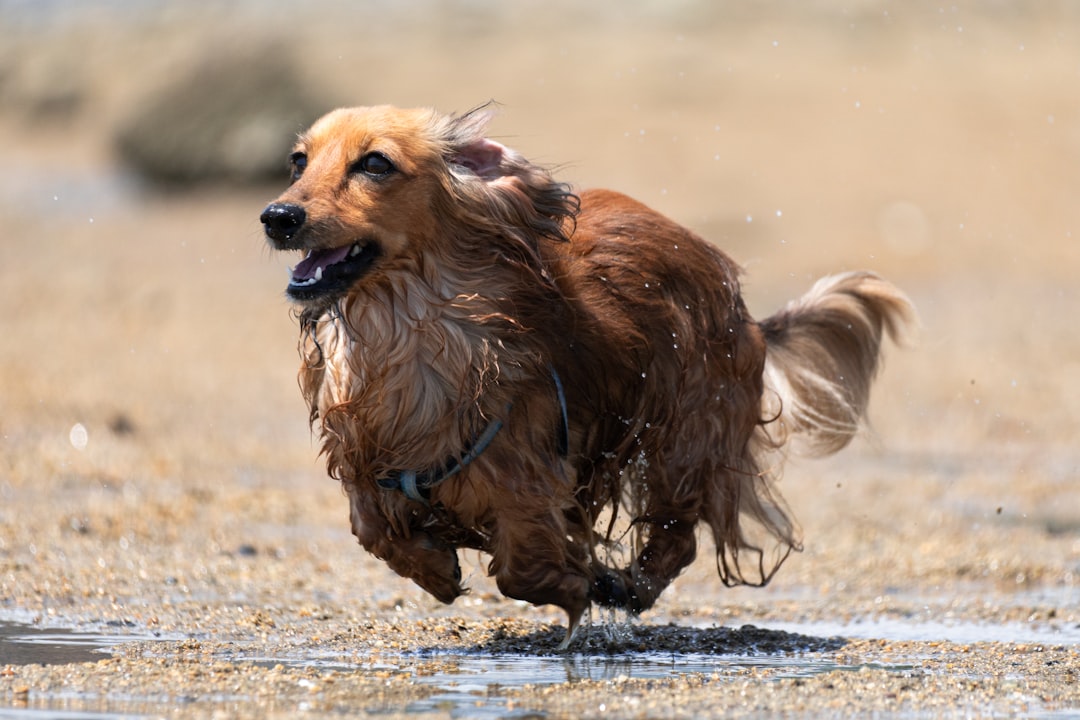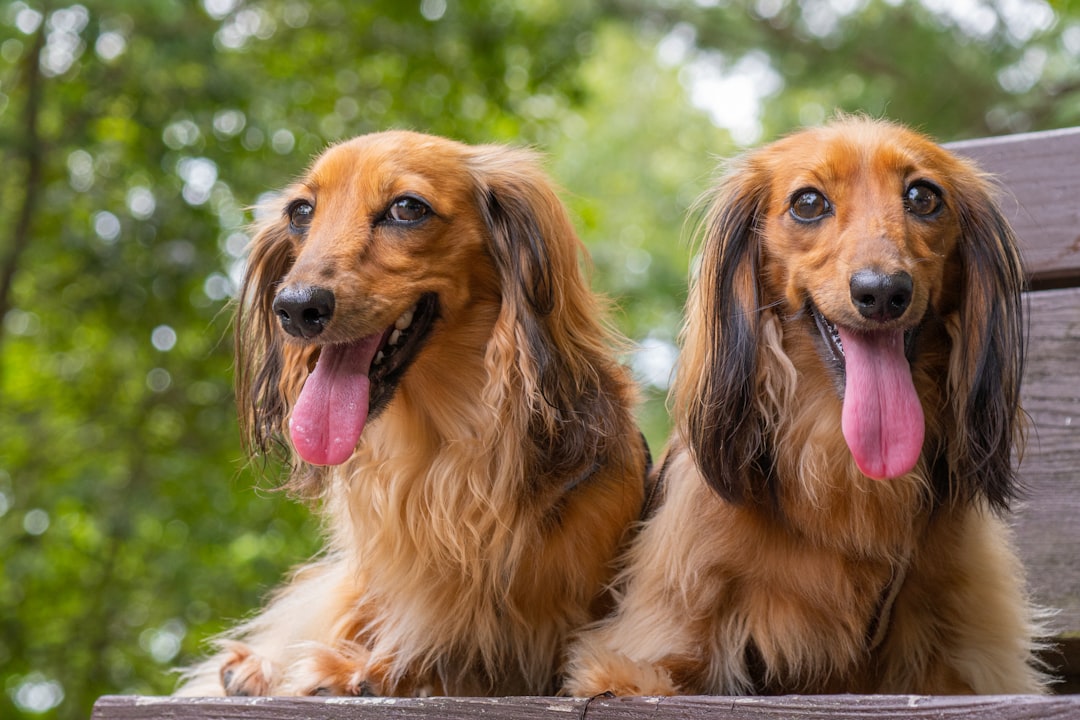The Treeing Walker Coonhound stands out as an energetic hunter with a fascinating history and strong presence. Originating from the United States, this breed exhibits remarkable speed and agility, making it a favorite among hunters. Known for their striking appearance and friendly temperament, Treeing Walker Coonhounds require regular exercise and proper training to thrive. As we explore their characteristics, health needs, and ideal living conditions, you’ll gain valuable insights into what makes this breed both captivating and deserving of attention in the canine world.
Origin and History of the Treeing Walker Coonhound
The Treeing Walker Coonhound has a rich history rooted in American hunting traditions. This breed originated in the United States during the 19th century, developed specifically for treeing raccoons and other game animals. Here’s a brief overview of its origins:
- Ancestry: The Treeing Walker Coonhound descends from several hound breeds, primarily the Virginia Hounds, mixed with English Foxhounds.
- Purpose: Originally bred for their superior tracking and hunting abilities, these dogs became essential companions for hunters looking for efficient, agile, and reliable game trackers.
- Recognition: The breed gained formal recognition in 1945 by the United Kennel Club (UKC) and became part of the American Kennel Club (AKC) in 2012.
With their strong drive and keen instincts, the Treeing Walker Coonhound exemplifies the qualities needed for tracking and hunting, making them a valued member of hunting families and outdoor enthusiasts alike.

Physical Characteristics and Appearance
The Treeing Walker Coonhound boasts a striking appearance that reflects its energetic nature. Here are the key physical characteristics:
- Size: This breed typically stands between 20 to 27 inches tall at the shoulder, with males generally larger than females.
- Weight: They usually weigh between 50 to 65 pounds, showcasing a sturdy build.
- Coat: The Treeing Walker Coonhound has a short, smooth coat that comes predominantly in white with black or brown patches, enhancing their striking profile.
- Ears: Their long, floppy ears not only give them an appealing look but also improve their ability to track scents.
- Eyes: Their expressive, dark eyes convey intelligence and curiosity, essential traits for their hunting background.
Comparison Table: Treeing Walker Coonhound vs. Other Coonhounds
| Feature | Treeing Walker Coonhound | Bluetick Coonhound | Black and Tan Coonhound |
|---|---|---|---|
| Size | 20-27 inches | 21-22 inches | 22-27 inches |
| Weight | 50-65 pounds | 45-80 pounds | 40-65 pounds |
| Coat | Short, smooth | Short, spotted | Short, smooth |
Overall, the Treeing Walker Coonhound’s distinctive looks and athletic physique make it not only a skilled hunter but also an attractive companion.
Temperament and Personality Traits
The Treeing Walker Coonhound is renowned for its friendly and gentle nature. These dogs exhibit a variety of personality traits that make them unique companions:
- Affectionate: They thrive on social interaction and bond closely with their families, often seeking cuddles and attention.
- Energetic: True to their hunting heritage, the Treeing Walker Coonhound has high energy levels, requiring regular exercise to keep them happy.
- Intelligent: This breed is quick to learn commands and skills, making training sessions enjoyable and productive.
- Independent: While they are trainable, their independent streak can sometimes challenge novice owners. Consistency is key during training.
- Alert: They make excellent watchdogs, as they are naturally curious and always on the lookout for any unusual activity.
In summary, the temperament of the Treeing Walker Coonhound is a delightful mix of loyalty, playfulness, and intelligence, making them fantastic companions for active families.
Training and Socialization Tips
Training a Treeing Walker Coonhound can be a rewarding experience due to their intelligence and eagerness to learn. Here are some effective tips to ensure successful training and socialization:
- Start Early: Begin training while your puppy is still young. Early exposure to various environments and experiences builds confidence.
- Use Positive Reinforcement: Encourage desired behaviors with treats, praise, or playtime. This method is more effective than punishment for a Treeing Walker Coonhound.
- Incorporate Variety: Keep training sessions interesting by mixing commands, tricks, and outdoor activities. This breed thrives on mental and physical stimulation.
- Socialize Regularly: Expose your dog to different people, pets, and settings. This practice helps them become well-adjusted adults who are less fearful of new situations.
- Be Consistent: Establish clear rules and commands to prevent confusion. Consistency is key in reinforcing good behavior.
- Engage in Activities: Consider canine sports or hunting tasks that harness their natural instincts while strengthening your bond.
With these training and socialization strategies, your Treeing Walker Coonhound will flourish into a well-mannered and happy companion.

Exercise and Activity Requirements
The Treeing Walker Coonhound is not just known for its impressive hunting skills; it also thrives on physical activity. To keep this breed happy and healthy, you must ensure they receive sufficient exercise. Here’s what you need to know:
- Daily Exercise: Aim for at least 1 to 2 hours of exercise each day. This could include:
- Long walks or jogs
- Playtime in a secure yard
- Engaging in dog sports such as agility or tracking
- Mental Stimulation: In addition to physical activity, the Treeing Walker Coonhound needs mental challenges. Consider:
- Puzzle toys
- Training sessions that incorporate obedience commands
- Social Interaction: Regular interaction with other dogs can help fulfill their social needs. Plan:
- Playdates with fellow dogs
- Visits to dog parks
In summary, the Treeing Walker Coonhound requires a robust exercise regimen that combines physical and mental activities. By meeting these needs, you’ll foster a well-balanced and content companion.
Common Health Issues and Care
The Treeing Walker Coonhound, known for its endurance and energy, can face some common health issues that every owner should be aware of. Early detection and proactive care can help manage these conditions effectively.
Common Health Issues:
- Hip Dysplasia: A genetic condition affecting the hip joint, leading to arthritis.
- Ear Infections: Due to floppy ears, they may be prone to infections, requiring regular cleaning.
- Obesity: With an active lifestyle, monitoring weight is essential to avoid obesity-related issues.
Care Tips:
- Regular Vet Check-ups: Schedule annual examinations to detect health issues early.
- Balanced Diet: Provide high-quality dog food tailored to their age, size, and activity level to maintain a healthy weight.
- Exercise Routine: Engage in daily activities—such as jogging or playing fetch—to keep them fit and mentally stimulated.
In summary, recognizing the potential health issues and adopting preventive care strategies will help ensure your Treeing Walker Coonhound remains a healthy and active companion for years to come.
Nutritional Needs and Feeding Guidelines
The Treeing Walker Coonhound thrives on a balanced diet that supports its high-energy lifestyle. Proper nutrition is crucial for maintaining their health and stamina. Here are some essential guidelines to consider:
- High-Quality Protein: Look for dog food with meat as the primary ingredient. This provides the necessary amino acids for muscle maintenance and recovery.
- Healthy Fats: Include omega fatty acids for a healthy coat and skin. Fish oil and chicken fat are excellent sources.
- Carbohydrates: Whole grains such as brown rice or oats offer energy. Avoid fillers like corn or soy, which provide minimal nutritional value.
- Vitamins and Minerals: Ensure that the diet contains essential vitamins (A, D, E) and minerals (calcium, phosphorus) to support overall wellness.
Feeding Guidelines:
| Age Group | Daily Amount |
|---|---|
| Puppy (up to 6 mo) | 3-4 meals, 1.5-2 cups |
| Young Adult (6 mo-2yr) | 2 meals, 2-3 cups |
| Adult (2+ years) | 2 meals, 2-3 cups |
Remember, adjust portion sizes based on your Treeing Walker Coonhound’s activity level and weight. Always consult with a veterinarian for personalized feeding advice.

Living Environment and Compatibility with Families
The Treeing Walker Coonhound excels in a variety of living environments, making it a fantastic family companion. However, certain conditions enhance its well-being:
Space: These dogs require ample room to roam and play. A home with a large yard is ideal, as the Treeing Walker Coonhound has high energy levels.
Exercise Needs: Regular outdoor time is essential. Engaging activities such as hiking and running help keep them mentally and physically stimulated.
Climate Adaptability: This breed can adapt to different climates, but should be protected from extreme cold or heat. Ensure there’s access to shade and water during warmer months.
Compatibility: Treeing Walker Coonhounds are typically friendly and sociable. They get along well with:
- Children: Their playful nature makes them great playmates.
- Other Pets: Early socialization can help them coexist peacefully with other animals.
In summary, the Treeing Walker Coonhound thrives in active families who enjoy outdoor adventures and can provide plenty of engagement and love.
Frequently Asked Questions
What is the history of the Treeing Walker Coonhound?
The Treeing Walker Coonhound originated in the United States in the 19th century and was developed as a hunting dog for raccoons and other game. Its ancestry traces back to various coonhounds and foxhounds, particularly the Walker hound, which was recognized for its exceptional ability to track and tree animals. As a result, the breed became favored among hunters for its endurance, intelligence, and strong scenting abilities, leading to its popularity in various hunting fields.
What are the key characteristics of Treeing Walker Coonhounds?
Treeing Walker Coonhounds are known for their athletic physique, featuring a short, glossy coat that is primarily white with black or tan markings. They typically weigh between 50 to 70 pounds and stand 20 to 27 inches tall at the shoulder. This breed possesses a keen sense of smell, strong hunting instincts, and considerable endurance, making them excellent working dogs. Additionally, they have a friendly and sociable demeanor, often forming close bonds with their families.
How much exercise do Treeing Walker Coonhounds need?
Treeing Walker Coonhounds are highly energetic dogs that require ample exercise to stay healthy and happy. It is recommended that they engage in at least 60 to 90 minutes of vigorous exercise each day, which can include walks, runs, or playtime in a secure area. Due to their hunting background, these dogs thrive in active environments where they can explore and utilize their natural hunting abilities. Regular mental stimulation, such as obedience training or interactive toys, is also essential for preventing boredom.
Are Treeing Walker Coonhounds good family pets?
Yes, Treeing Walker Coonhounds can make excellent family pets due to their affectionate nature and sociability. They are generally good with children and can adapt well to a household environment, provided they receive regular exercise and mental engagement. However, their strong prey drive means they should be properly socialized from an early age to interact positively with other pets. With consistent training and positive reinforcement, they can integrate successfully into family life.



